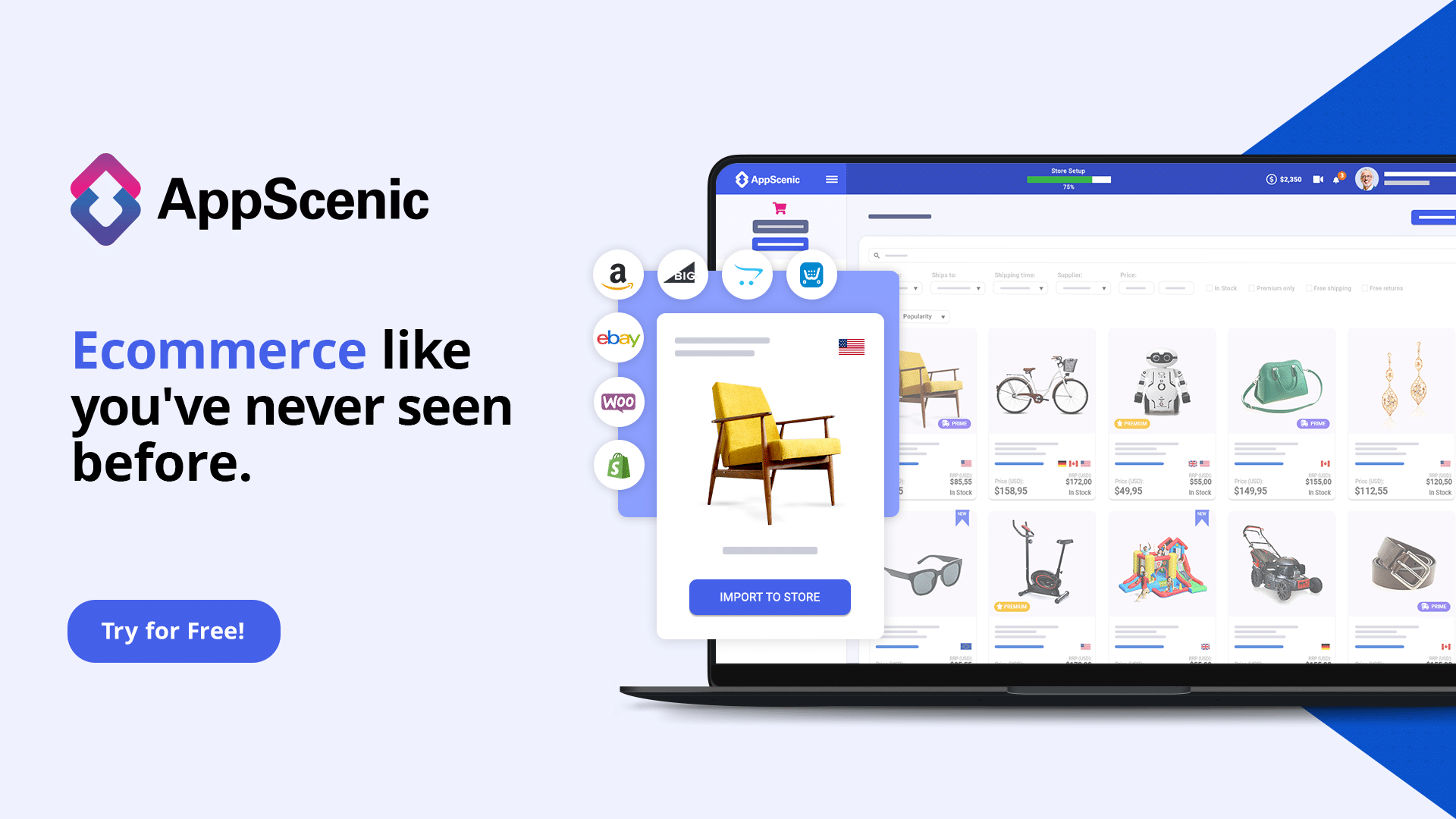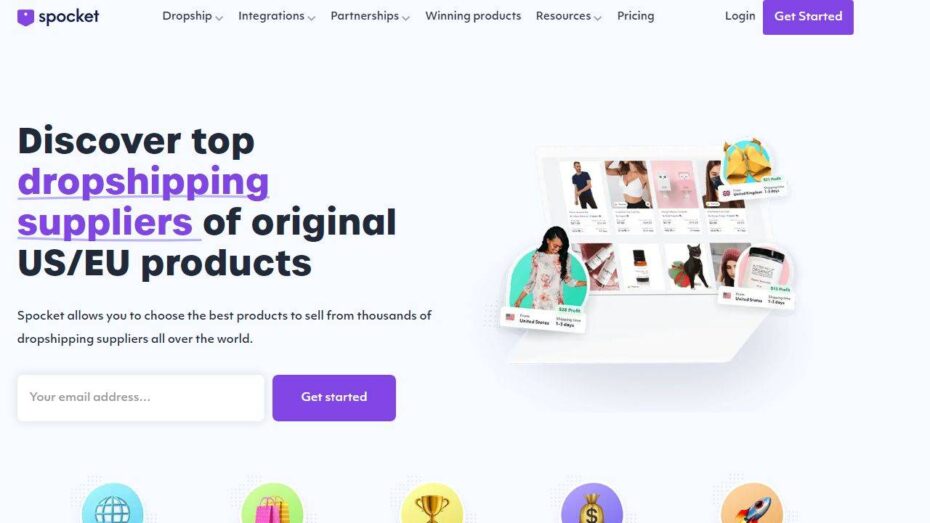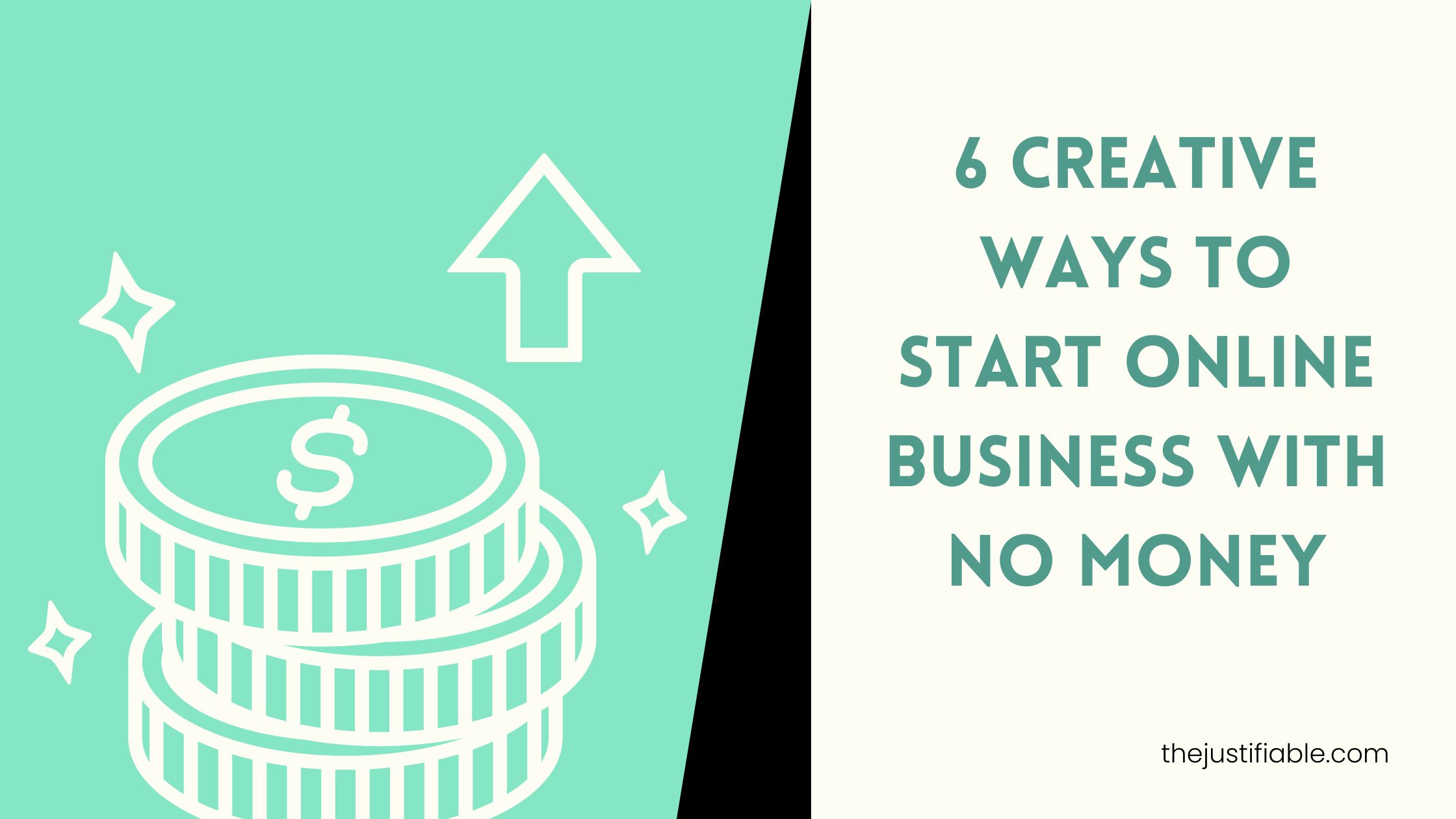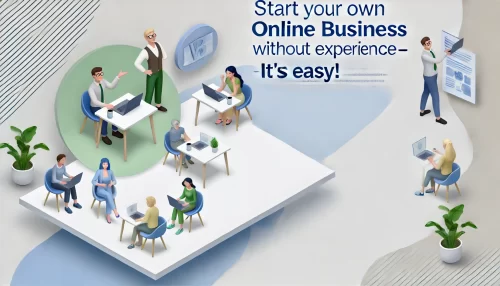Table of Contents
How to start online business with no money? Are you eager to start an online business but worried about the costs? How can you turn your ideas into reality without spending a dime? In this article, I will explore six creative ways to start an online business with no money, guiding you through each step to ensure you can launch successfully without financial strain.
1. Engage in Dropshipping to Sell Products Online
Dropshipping is an effective method for starting an online business with no money. This business model allows you to sell products without holding inventory or managing shipping logistics. You only purchase products from suppliers when you make a sale, making it a low-risk way to start selling online.
To succeed in dropshipping, it’s crucial to understand the basics of the model, find reliable suppliers, and set up your online store. Let’s delve into each of these steps to help you get started with dropshipping and build a successful online business.
Dropshipping Sites Recommendations
 Appscenic
|  Spocket
|
Understand the Basics of Dropshipping
Dropshipping involves selling products through an online store without managing inventory or handling shipping. When a customer places an order, the product is purchased from a third-party supplier who ships it directly to the customer. This eliminates the need for warehousing and reduces upfront costs.
One of the main advantages of dropshipping is that it allows you to offer a wide range of products without the need to invest in stock. You can test different products and niches with minimal risk, as you only pay for items after making a sale. However, it’s important to choose products that are in demand and have good profit margins.
Research various dropshipping suppliers and platforms to find the best fit for your business. Look for suppliers with reliable shipping, quality products, and good customer service. Establishing a strong relationship with your suppliers will help ensure smooth operations and address any issues that arise.
Additionally, familiarize yourself with the legal and financial aspects of dropshipping, such as tax regulations and return policies. Understanding these elements will help you run your business more effectively and avoid potential pitfalls.
Find Reputable Suppliers
Finding reputable suppliers is crucial for the success of your dropshipping business. Reliable suppliers will ensure that your customers receive high-quality products and timely deliveries. Begin by researching popular dropshipping platforms such as AliExpress, Oberlo, and SaleHoo, which connect you with a variety of suppliers.
Evaluate suppliers based on their product quality, shipping times, and customer service. Read reviews and ratings from other sellers to gauge their reliability. Order samples of products to verify their quality before listing them in your store. This will help you ensure that you’re offering products that meet your standards.
Consider establishing direct relationships with manufacturers or wholesalers if you want more control over your supply chain. This can help you negotiate better prices and terms. However, be prepared to invest more time in managing these relationships and handling potential issues.
Regularly review your suppliers’ performance and be prepared to switch if needed. Maintaining a good supplier network is essential for providing a positive customer experience and sustaining your dropshipping business.
Set Up Your Online Store at No Cost
Setting up an online store for dropshipping can be done at minimal or no cost using various e-commerce platforms. Platforms like Shopify, WooCommerce, and BigCommerce offer free trials or low-cost plans that allow you to create and manage your store without significant upfront expenses.
Choose a platform that aligns with your needs and offers integrations with dropshipping tools. Shopify, for example, provides seamless integration with dropshipping apps like Oberlo, making it easy to import products and manage orders. WooCommerce is another popular option that integrates with WordPress and offers flexibility in customizing your store.
Design your online store to be user-friendly and visually appealing. Use high-quality product images, detailed descriptions, and clear navigation to enhance the shopping experience. Implement essential features like a shopping cart, secure payment options, and customer support to build trust and encourage sales.
Promote your store through social media, content marketing, and paid advertising to attract visitors and drive sales. Monitor your store’s performance using analytics tools to identify areas for improvement and optimize your strategies. With a well-set-up store and effective marketing, you can successfully engage in dropshipping and grow your online business.
2. Start a Blog and Monetize It Effectively
Starting a blog is an excellent way to launch an online business with no money. By sharing your knowledge and passion, you can attract an audience and create multiple income streams. The key to success lies in choosing the right platform, optimizing your content for search engines, and exploring various monetization strategies.
Blogging provides a flexible and scalable business model that allows you to grow at your own pace. With dedication and consistency, you can turn your blog into a profitable venture, even if you start with zero investment. Let’s explore how you can start a blog and monetize it effectively.
Choose a Free Blogging Platform
Selecting a free blogging platform is the first step to start an online business with no money. Platforms like WordPress.com, Blogger, and Medium offer user-friendly interfaces and essential features to get your blog up and running. These platforms provide free themes and templates, allowing you to create a professional-looking blog without any design skills.
When choosing a platform, consider your long-term goals and the level of control you want over your blog. WordPress.com, for instance, offers more customization options and scalability compared to Blogger or Medium. Once you’ve selected your platform, focus on creating high-quality content that resonates with your target audience.
Create a content plan that outlines your blog topics, posting schedule, and promotional strategies. Consistency is crucial in building a loyal readership. Aim to publish new content regularly, whether it’s weekly or bi-weekly, to keep your audience engaged. Engaging visuals, such as images and infographics, can enhance your posts and make them more shareable.
Another aspect to consider is your blog’s layout and navigation. Ensure that your blog is easy to navigate, with clear categories and a search function. This will improve the user experience and encourage visitors to explore more of your content. As your blog grows, you may want to invest in a custom domain name to enhance your brand’s credibility.
Focus on SEO to Drive Traffic
Search engine optimization (SEO) is vital for driving organic traffic to your blog. By optimizing your content for search engines, you can increase your visibility and attract more readers. Start with keyword research to identify the terms your target audience is searching for. Tools like SEOPowersuite and Ubersuggest can help you find relevant keywords, including “start online business with no money.”
Incorporate these keywords naturally into your blog posts, headings, and meta descriptions. Avoid keyword stuffing, as this can harm your search rankings. Instead, focus on creating informative and engaging content that provides genuine value to your readers. Long-tail keywords, which are more specific phrases, can also help you attract targeted traffic.
Another critical aspect of SEO is on-page optimization. Ensure that your blog posts are well-structured, with clear headings, subheadings, and bullet points. Use descriptive and compelling titles that encourage clicks. Internal linking, where you link to other relevant posts on your blog, can improve your SEO and keep readers on your site longer.
Backlinks, or links from other websites to your blog, are another powerful SEO factor. Guest posting on reputable blogs, participating in online communities, and collaborating with influencers can help you earn high-quality backlinks. These efforts will enhance your blog’s authority and search engine rankings over time.
Monetize Through Affiliate Marketing and Ads
Once you have built a steady stream of traffic, it’s time to monetize your blog. Affiliate marketing and ads are two popular ways to generate income from your blog. Affiliate marketing involves promoting products or services and earning a commission for each sale made through your referral links. Choose affiliate programs that align with your blog’s niche and audience interests.
Write honest and detailed reviews of the products you promote. Including personal experiences and benefits can make your reviews more credible and persuasive. Incorporate affiliate links naturally within your content, and use call-to-action buttons to encourage clicks. Transparency is essential, so always disclose your affiliate relationships to maintain trust with your audience.
Ads are another way to monetize your blog. You can start with Monetag, which places targeted ads on your blog and pays you for clicks or impressions. As your traffic grows, you can explore other ad networks or sell ad space directly to businesses in your niche. Balancing ad placement is crucial to avoid overwhelming your readers and maintaining a positive user experience.
Diversifying your income streams can further increase your blog’s profitability. Consider offering sponsored posts, where brands pay you to write about their products or services. You can also create and sell digital products, such as e-books, online courses, or printables, that provide additional value to your audience. Continuously experiment with different monetization strategies to find what works best for your blog.
3. Offer Freelance Services to Generate Income
Starting an online business with no money can be accomplished effectively through offering freelance services. Freelancing allows you to leverage your existing skills and talents to generate income without significant upfront costs. This approach provides flexibility and control over your work, making it a popular choice for many aspiring entrepreneurs.
To begin, identify the services you can offer based on your expertise. Whether it’s writing, graphic design, web development, or marketing, there’s a high demand for freelance professionals across various industries. Once you’ve pinpointed your niche, you can create a compelling profile on popular freelance websites to attract clients and start earning.
Identify Your Skills and Niche
The first step in offering freelance services is identifying your skills and choosing a niche that aligns with them. Reflect on your strengths and experiences to determine what you can offer clients. Consider areas where you have specialized knowledge or unique abilities that can set you apart from the competition.
Once you’ve identified your niche, research the market demand for those services. Look at job postings and freelance platforms to understand what clients are seeking and how much they are willing to pay. This research will help you position your services effectively and tailor your offerings to meet client needs. Additionally, consider obtaining relevant certifications or training to enhance your credibility and attract higher-paying clients.
After narrowing down your niche, create a portfolio that showcases your best work. Highlight projects that demonstrate your skills and include testimonials from satisfied clients. A well-curated portfolio can significantly boost your chances of securing new freelance opportunities. Regularly update your portfolio with recent work to keep it relevant and impressive.
Set clear goals for your freelance business. Determine how many clients you want to work with, your desired income level, and the types of projects you enjoy most. Having specific goals will help you stay focused and motivated, and allow you to measure your progress over time. Be prepared to adapt your goals as you gain more experience and insights into the freelance market.
Create a Profile on Freelance Websites
Creating a profile on freelance websites is essential for connecting with potential clients. Platforms like Upwork, Fiverr, and Freelancer provide a space for you to showcase your skills and find freelance gigs. Start by crafting a compelling profile that highlights your expertise, experience, and what sets you apart from other freelancers.
Choose a professional profile picture and write a concise, engaging bio that captures your skills and personality. Use power words to make your profile stand out and attract attention. Clearly outline the services you offer, and include relevant keywords to improve your visibility in search results.
Set competitive rates that reflect your skills and market demand. When you’re just starting, it might be beneficial to offer lower rates to build your portfolio and gain positive reviews. As you accumulate experience and testimonials, you can gradually increase your rates to match your growing reputation and expertise.
Actively seek out and apply for jobs that match your skills and interests. Write personalized proposals that address the client’s needs and demonstrate how you can provide value. Follow up on applications and be responsive to client inquiries. Building strong client relationships and delivering high-quality work will lead to repeat business and referrals.
Network and Market Your Services
Networking and marketing are crucial for growing your freelance business. Start by leveraging your existing network of friends, family, and professional contacts. Let them know about your freelance services and ask for referrals or introductions to potential clients. Word-of-mouth recommendations can be a powerful way to find new opportunities.
Use social media platforms to market your services and connect with potential clients. Share your work, insights, and industry news to position yourself as an expert in your field. Join relevant online communities and participate in discussions to expand your network and visibility. LinkedIn, in particular, can be a valuable platform for showcasing your professional achievements and connecting with decision-makers.
Consider creating a personal website or blog to further establish your online presence. A website allows you to showcase your portfolio, share client testimonials, and provide more detailed information about your services. Blogging about topics related to your niche can attract visitors to your site and demonstrate your expertise. Optimize your website with relevant keywords to improve its search engine rankings and attract organic traffic.
Continuously improve your skills and stay updated on industry trends. Attend webinars, workshops, and conferences to learn from experts and network with peers. Invest in online courses or certifications to enhance your capabilities and credibility. Being proactive about your professional development will make you more competitive and open up new opportunities for your freelance business.
4. Utilize Print on Demand Services for Merchandise
Utilizing print on demand services is a fantastic way to start an online business with no money. These services allow you to create and sell custom merchandise without the need for inventory or upfront costs. You can design unique products and have them printed and shipped to customers on demand, making it a risk-free venture.
Print on demand platforms handle the production, fulfillment, and shipping processes, allowing you to focus on creating and marketing your products. This business model is particularly appealing for artists, designers, and entrepreneurs who want to monetize their creativity without financial constraints.
Design Unique Products Without Inventory Costs
Designing unique products is the cornerstone of a successful print on demand business. Start by brainstorming product ideas that align with your interests and resonate with your target audience. Popular products include t-shirts, mugs, phone cases, and tote bags. Use graphic design software or online tools to create eye-catching designs that will attract customers.
Focus on creating designs that stand out and offer something different from what’s already available in the market. Consider trends, seasonal themes, and niche markets when developing your products. High-quality designs and originality will make your merchandise more appealing and increase the likelihood of sales.
Test your designs on various products to see which ones look best and receive the most positive feedback. Most print on demand platforms offer mockup generators that allow you to preview your designs on different items. This can help you make informed decisions about which products to offer in your store.
Regularly update your product catalog with new designs to keep your offerings fresh and exciting. Encourage customer feedback and use it to improve your designs and product selection. Engaging with your audience and incorporating their preferences will help you build a loyal customer base.
Partner with Reliable Print on Demand Companies
Partnering with reliable print on demand companies is essential for ensuring high-quality products and customer satisfaction. Research and compare different platforms to find one that best suits your needs. Popular options include Printful, Teespring, and Redbubble, each offering various products and features.
Consider factors such as product quality, pricing, shipping times, and customer service when choosing a print on demand partner. Read reviews and testimonials from other users to gauge their experiences and satisfaction levels. A reliable partner will handle the production and fulfillment processes efficiently, allowing you to focus on growing your business.
Once you’ve selected a print on demand platform, integrate it with your online store. Most platforms offer easy integrations with e-commerce platforms like Shopify, WooCommerce, and Etsy. This seamless connection will streamline your operations and ensure a smooth customer experience.
Monitor your partner’s performance regularly and address any issues promptly. Maintaining open communication with your print on demand provider is crucial for resolving problems and ensuring that your customers receive high-quality products on time. Building a strong relationship with your partner will contribute to the long-term success of your business.
Promote Your Merchandise Online
Promoting your merchandise is key to attracting customers and driving sales. Start by creating a comprehensive marketing strategy that outlines your goals, target audience, and promotional tactics. Utilize social media, email marketing, and content marketing to reach potential customers and showcase your products.
Leverage social media platforms to share your designs and engage with your audience. Use visually appealing posts, stories, and videos to highlight your products and their unique features. Running contests, giveaways, and influencer collaborations can also boost your visibility and generate interest in your merchandise.
Email marketing is another effective way to promote your print on demand products. Build an email list of interested customers and send them regular updates, promotions, and exclusive offers. Personalized email campaigns can strengthen customer relationships and encourage repeat purchases.
Consider investing in paid advertising to reach a wider audience. Platforms like Facebook Ads, Instagram Ads, and Google Ads allow you to target specific demographics and interests. Start with a small budget and experiment with different ad formats to determine what works best for your business. Analyzing your ad performance and making data-driven adjustments will help you optimize your campaigns and maximize your return on investment.
5. Create and Sell Digital Products
Creating and selling digital products is an effective way to start an online business with no money. Digital products, such as e-books, online courses, and printables, offer a scalable business model that requires minimal overhead. These products can be produced once and sold repeatedly, generating passive income over time.
The process of creating digital products involves identifying your target audience’s needs and developing content that addresses those needs. With the right tools and strategies, you can create high-quality digital products that attract customers and drive sales. Let’s explore how you can successfully create and sell digital products.
Develop E-books, Courses, or Printables
E-books, online courses, and printables are popular digital products that cater to various needs and interests. If you have expertise in a particular subject, writing an e-book can be a great way to share your knowledge and establish yourself as an authority. Choose a topic that you are passionate about and that has a clear demand in the market. Structure your e-book with engaging content, compelling visuals, and actionable advice.
Creating online courses is another lucrative option. Use platforms like Teachable or Udemy to design and host your courses. Develop course materials such as video lectures, worksheets, and quizzes that provide value and engage your students. Offer a clear learning path and measurable outcomes to enhance the learning experience and encourage positive reviews.
Printables, such as planners, worksheets, and templates, are also in high demand. Design printables that solve specific problems or fulfill particular needs. For example, a budget planner or a meal planning template can attract a wide audience. Ensure your printables are visually appealing and easy to use, making them more likely to be purchased and utilized.
Regularly update your digital products based on customer feedback and industry trends. Continuous improvement will help maintain the relevance and quality of your offerings. Additionally, consider bundling related products together to provide more value and increase sales opportunities.
Use Free Tools to Create Digital Content
Utilizing free tools is a cost-effective way to create high-quality digital content. Platforms like Canva and Google Docs offer robust features for designing e-books, printables, and course materials. Canva provides a wide range of templates and design elements that can help you create visually appealing content without needing advanced graphic design skills.
For e-book creation, tools like Google Docs or Microsoft Word can be used to write and format your content. Convert your finished document into a professional PDF using free tools like PDFescape or Smallpdf. This will ensure your e-book looks polished and is easily accessible to your readers.
When developing online courses, platforms like Google Classroom or Microsoft Teams can be used to organize course materials and communicate with students. Record video lectures with free software like OBS Studio or use Zoom for live sessions. These tools help you deliver a high-quality educational experience without incurring additional costs.
Additionally, free tools for creating and managing printables include Adobe Spark and GIMP. These tools offer functionalities for designing and editing graphics, making it easier to produce printables that are both attractive and functional. Leveraging these resources will help you create digital products efficiently and professionally.
Sell on Platforms Like Etsy or Gumroad
Selling your digital products on platforms like Etsy or Gumroad provides a straightforward way to reach customers without the need for a dedicated e-commerce site. Etsy is a popular marketplace for handmade and digital products, offering built-in traffic and a user-friendly interface for listing and selling your products.
To start selling on Etsy, create a seller account and set up your shop. List your digital products with detailed descriptions, high-quality images, and competitive pricing. Optimize your product listings with relevant keywords to improve visibility in Etsy’s search results. Promoting your shop through social media and email marketing can also help drive traffic and boost sales.
Gumroad is another excellent platform for selling digital products. It allows you to set up a storefront and sell directly to customers with minimal fees. Gumroad offers features like product variations, discount codes, and customer analytics, making it a versatile option for managing your digital product sales.
Consider using a combination of platforms to maximize your reach and diversify your revenue streams. Monitor your sales performance on each platform and adjust your strategies accordingly. Engaging with customers through reviews and feedback will help you refine your products and enhance your selling experience.
6. Leverage Free Online Platforms for Your Business
Starting an online business with no money might seem daunting, but leveraging free online platforms can be a game-changer. These platforms offer powerful tools to establish your presence, reach potential customers, and build your brand without any upfront costs. By taking advantage of these resources, you can create a strong foundation for your business without breaking the bank.
One of the most effective ways to start is by using social media platforms. These platforms provide a cost-effective way to connect with your target audience, share content, and promote your products or services. Additionally, free website builders and e-commerce platforms can help you establish a professional online presence and sell your products seamlessly.
Utilize Social Media to Build Your Brand
Social media is a powerful tool for anyone looking to start an online business with no money. Platforms like Facebook, Instagram, and Twitter offer free accounts that can be used to promote your business and engage with your audience. By creating compelling content and interacting with your followers, you can build a loyal community around your brand.
Start by identifying which social media platforms your target audience uses most frequently. Once you have chosen the right platforms, create profiles that reflect your brand’s identity. Use high-quality images and write engaging bios to attract followers. Consistently posting valuable content, such as tips, tutorials, and behind-the-scenes looks at your business, will keep your audience interested and coming back for more.
Another way to leverage social media is through collaboration and partnerships. By teaming up with influencers or other businesses in your niche, you can reach a broader audience. Running giveaways, contests, and engaging in hashtag campaigns are also effective strategies to boost your visibility and grow your follower base.
Social media advertising can also be an affordable way to increase your reach. Many platforms offer targeted advertising options that allow you to reach specific demographics. Start with a small budget and test different ad formats to see what works best for your business. Over time, you can refine your strategy to maximize your return on investment.
Create a Free Website Using Website Builders
Having a professional website is crucial for establishing credibility and attracting customers. Fortunately, there are several free website builders available that allow you to create a stunning website without any coding skills. Platforms like Wix, Weebly, and WordPress.com offer user-friendly drag-and-drop interfaces that make it easy to design your site.
Start by choosing a template that fits your brand’s aesthetic. Customize the template with your brand colors, fonts, and images. Make sure to include essential pages such as Home, About, Services, and Contact. A blog section can also be a valuable addition, allowing you to share insights, news, and updates related to your business.
When creating content for your website, focus on providing value to your visitors. Write clear, concise, and informative copy that addresses their needs and questions. Optimize your content with relevant keywords, including “start online business with no money,” to improve your search engine rankings. High-quality images and videos can also enhance the user experience and make your site more engaging.
Don’t forget to integrate social media links and email subscription forms to stay connected with your audience. Regularly updating your website with fresh content will keep visitors coming back and improve your SEO. Utilizing free website analytics tools like Google Analytics can help you track your site’s performance and make data-driven decisions.
Use Free E-commerce Platforms to Sell Products
Selling products online is easier than ever with the help of free e-commerce platforms. These platforms provide all the tools you need to set up an online store, manage inventory, and process payments without any upfront costs. Shopify, Big Cartel, and WooCommerce are popular options that offer free plans or trial periods to get you started.
Begin by signing up for a free account and selecting a template that matches your brand. Customize your online store with product categories, detailed descriptions, and high-quality images. Make sure to highlight the unique features and benefits of your products to attract potential customers.
Marketing your online store is essential for driving traffic and sales. Utilize social media, email marketing, and SEO strategies to reach your target audience. Offering promotions, discounts, and free shipping can also incentivize purchases and boost your sales.
Managing customer relationships is crucial for long-term success. Provide excellent customer service by responding to inquiries promptly and addressing any issues that arise. Encourage satisfied customers to leave reviews and testimonials, which can build trust and credibility for your business.
Finally, regularly analyze your store’s performance using the built-in analytics tools provided by the e-commerce platform. Track metrics such as traffic, conversion rates, and sales to identify areas for improvement. Continuously refining your strategy based on data insights will help you grow your online business with no money.
frequently asked questions (FAQ)
What are some free platforms to start an online business with no money?
There are several free platforms you can leverage to start an online business without any upfront costs. Social media platforms like Facebook, Instagram, and Twitter allow you to promote your business and engage with your audience. Free website builders such as Wix, Weebly, and WordPress.com help you create a professional online presence. Additionally, free e-commerce platforms like Shopify (with a free trial), BigCommerce, and WooCommerce can be used to set up an online store.
How can I use social media to build my brand for free?
Social media is a powerful tool for building your brand without spending money. Start by identifying which platforms your target audience uses most frequently. Create profiles that reflect your brand’s identity with high-quality images and engaging bios. Post valuable content regularly, such as tips, tutorials, and behind-the-scenes looks at your business. Engage with your followers through comments, messages, and interactive content like polls and live videos. Collaborate with influencers and run contests or giveaways to expand your reach.
How can I monetize my blog without spending money?
Monetizing a blog without spending money can be achieved through several methods. Start by optimizing your content for search engines (SEO) to attract organic traffic. You can earn money through affiliate marketing by promoting products and earning commissions on sales. Another option is to display ads using networks like Adsterra. Additionally, you can offer sponsored posts, sell digital products like e-books and courses, or use your blog to market your freelance services.
What is dropshipping and how can I start it with no money?
Dropshipping is a business model where you sell products online without holding any inventory. When a customer places an order, the product is purchased from a third-party supplier who ships it directly to the customer. To start dropshipping with no money, you can use free trials or low-cost plans from platforms like Shopify, WooCommerce, and BigCommerce. Research reliable suppliers on platforms like AliExpress and Oberlo, create your online store, and promote your products through free marketing channels like social media and content marketing.
What types of digital products can I sell online?
There are various types of digital products you can sell online, including e-books, online courses, printables (like planners and templates), graphics and design elements, software, music, and videos. These products can be created once and sold repeatedly, providing a scalable business model with minimal overhead costs. Platforms like Teachable and Gumroad can help you create and sell your digital products effectively.
How can I offer freelance services to generate income online?
To offer freelance services and generate income online, start by identifying your skills and choosing a niche that aligns with them. Create a compelling profile on freelance websites like Upwork, Fiverr, and Freelancer, highlighting your expertise and experience. Set competitive rates, craft personalized proposals for potential clients, and deliver high-quality work to build a positive reputation. Networking, leveraging social media, and maintaining a professional portfolio can also help attract clients and grow your freelance business.








